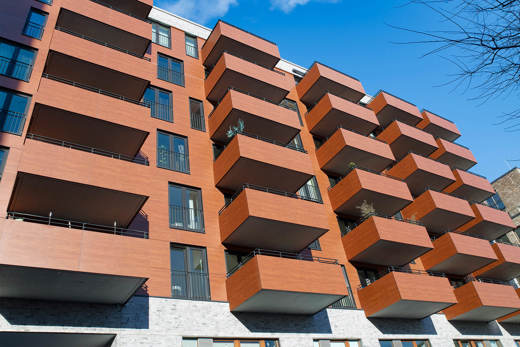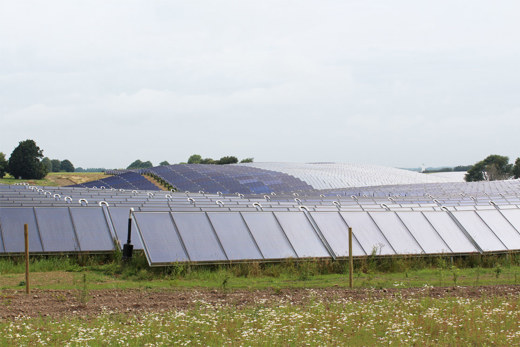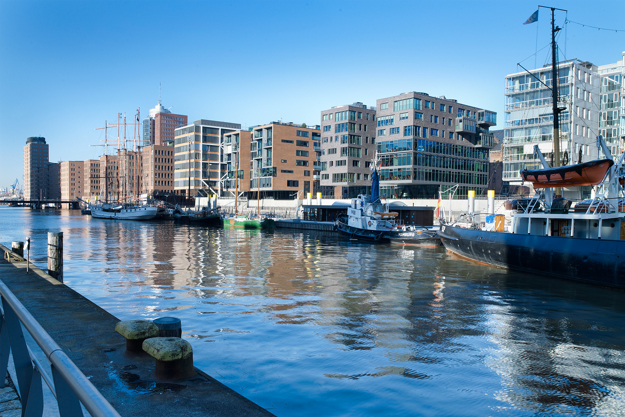
What do Istanbul, Hamburg, Tuzla and Silkeborg have in common? By implementing proper district heating strategies and solutions, they have chosen the path of energy efficiency and lower costs. Read about their experience. Tomorrow, your city could be next.
In Istanbul, Turkey, Teknopark Istanbul is the new science and technology hub of Turkey aimed to support technological development in the country. In the shorter term, Teknopark will comprise up to 45 buildings for leading-edge start-ups and R&D environments, where innovators and entrepreneurs can meet and pioneer new technologies. In the longer term, the park is prepared for up to 200 buildings of varying sizes.
The innovative nature of the new Teknopark called for innovative building solutions. As part of this ambition, Teknopark management opted for district energy as the heating and cooling solution of the large campus area to make the park highly energy efficient, climate friendly, and cost-effective in daily operation.
A central boiler fired by natural gas supplies the energy for the district energy system. As new buildings and research facilities are designed and constructed in the coming years (after the first ones being connected to the system in 2016), they will gradually be added to the district energy network that was laid down as part of the initial site development project.
All substations and control components are connected to the central Building Management System to allow easy and efficient control of the entire system. By relying on Danfoss, a pioneer in district energy solutions, to supply the fully fitted substations, time on installation and commissioning is saved. At the same time, service agreements with only one supplier that knows all parts and can take responsibility for quick and efficient trouble-shooting and repairs can be made. This way, all Teknopark institutions and companies can be offered reliable supplies of heating, cooling, and hot water at all times.

Setting the standards in Hamburg’s HafenCity
In Germany, the use of district heating is not quite that widespread, compared to some other EU countries. One example of widespread use, however, is Hamburg, which has a vast district heating network supplying 19% of all households with district heating. A superlative city development named HafenCity has been at the heart of the city’s plans.
Since becoming Europe’s largest inner-city development project covering 155 hectares of harbor area in the early 2010s, it is setting standards throughout Europe with its mix of apartments, offices, recreational facilities, retail trade and culture. This is also true of its energy supply, as city planners chose the most sustainable and economically advantageous long-term solution: all buildings are supplied with district heating.
The goal for HafenCity was to develop an energy supply concept that fulfilled the strictest economic and environmental requirements. In essence, the concept is based on the combination of the existing, well-proven Hamburg district heating system with decentralized, local heating distribution units.
The district heating supply in HafenCity is a cost-effective and sustainable solution. Hamburg’s prestigious project is a model for successful city development and not just for architectural reasons. The energy concept also sets standards. The control equipment installed in a wide range of buildings for the distribution of district heating ensures that every single kilowatt of energy is used as efficiently as possible, to the benefit of house owners, tenants and the energy supplier.

Silkeborg’s solar solution
Moving back north-west across Europe, there is another strong example emphasising the benefits of implementing a new system into the city. In Silkeborg, Denmark, the world’s largest solar heating plant harnesses energy to heat the homes and workplaces of 40,000 citizens. After helping to achieve a fascinating 30% cost reduction in 1st year, it currently supplies 18-20% of the annual heat consumption which has an ambitious target of CO2 neutrality in heat production by the year 2030.
The government in Denmark is furthermore reducing subsidies to traditional power sources to motivate utility companies to transfer to green energy sources. Silkeborg District Heating plant had installed the new solar heating plant in advance of just such a reduction in subsidies which came into effect in January 2019.
Solar water heating was chosen since it allows storage of solar energy harvested in daylight for use at night time or in a different time of year. This extends the added value of the sun and makes solar solutions even more profitable. The Silkeborg plant is a shining example of a cost and energy effective solution. Designed for a lifetime of 25 years (and containing 22 km of piping linking together 12,436 solar heating panels, equivalent to the area of 20 football fields), it is 4-6 times more effective than residential solar water heating systems installed typically on rooftops of private homes.
As both percentage and number of people living in cities is projected to grow significantly by 2050, the impact on cities, their energy consumption and costs will be even bigger than today. It is precisely because of this that examples set by Istanbul, Hamburg, Tuzla or Silkeborg should be followed to create a cleaner, greener and less expensive future.



